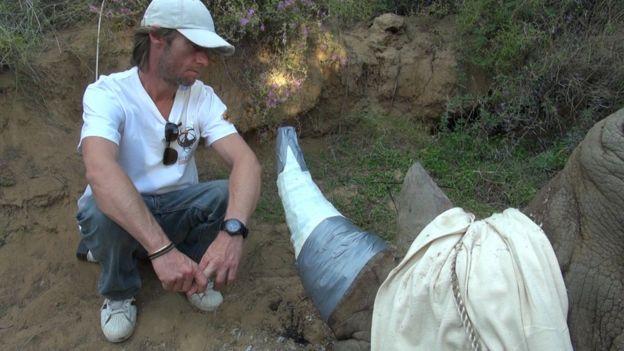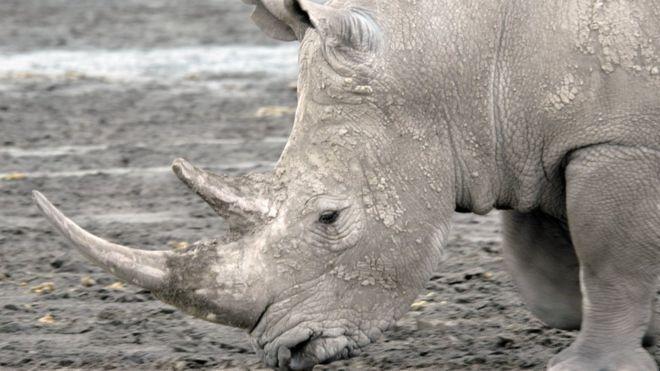There is no shortage of the bizarre beliefs that have been concocted by human beings since prehistory. Not so long ago, European doctors prescribed powders made from ground up excavated Egyptian mummies to make fantastical cure-all medicines that were pedaled not just among quacks but as a regular part of an apothecary’s ingredients. When the fashion for mummy medicine passed, it was not the end of the ‘medical’ madness, and to this day bits of animals such as sharks, tigers, and rhinos are sought after as powerful, magical panaceas.
 While the destruction of a large number of Egyptian mummies is unfortunate, the decimation of the rhino population in response to black market demand is truly tragic. In 2011, extinction was declared as the fate of black rhinos in West Africa. In 2015, the ancient Sumatran rhino followed in its footsteps and was declared extinct in Malaysia. Currently, there are only four remaining northern white rhinos left in Central Africa and their cousins, the southern white rhino, are under heavy assault from poachers striving to meet the demand for rhino horns.
While the destruction of a large number of Egyptian mummies is unfortunate, the decimation of the rhino population in response to black market demand is truly tragic. In 2011, extinction was declared as the fate of black rhinos in West Africa. In 2015, the ancient Sumatran rhino followed in its footsteps and was declared extinct in Malaysia. Currently, there are only four remaining northern white rhinos left in Central Africa and their cousins, the southern white rhino, are under heavy assault from poachers striving to meet the demand for rhino horns.
 Yesterday, four experts gathered as part of the BBC World Service Inquiry program to discuss the possibilities for addressing this serious problem. Each offered an idea as a step toward addressing what is a extremely complex issue, and not all of the ideas were easy to stomach. One of the proposals, put forth by Damian Vergnaud, head of the Inverdoon Game Reserve in South Africa, suggests that 3D printing could provide a path if not to the elimination of poaching for horns, at least a very significant reduction in its practice.
Yesterday, four experts gathered as part of the BBC World Service Inquiry program to discuss the possibilities for addressing this serious problem. Each offered an idea as a step toward addressing what is a extremely complex issue, and not all of the ideas were easy to stomach. One of the proposals, put forth by Damian Vergnaud, head of the Inverdoon Game Reserve in South Africa, suggests that 3D printing could provide a path if not to the elimination of poaching for horns, at least a very significant reduction in its practice.
Vergnaud was first able to deliver a bit of good news with the announcement that the reserve had welcomed a baby rhino into the world after nearly 20 years without such an event. He then went on to discuss some of the efforts they have made at the reserve to reduce the value of the animals’ horns, and thereby diminish the incentives for poaching. The first approach was to inject dyes into the horn in an effort to destroy its value, even after injecting this dye in fifty places in a horn, however, they still lost some of their rhino to poachers. Vergnaud decided it was time to try and take this idea to the next level and devised a new plan involving 3D printing:
“The concept is quite simple. We take a picture of the rhino, using a 3D computer design program, and create a horn mold with the 3D printer. We cut the rhino’s real horn off and fill the mold with liquid plastic and aluminum. It dries very quickly and when we remove the mold, we have a horn which is the same color, shape and size as the original.”
 A key component to this plan is ensuring that poachers know that the rhinos have had their horns replaced. This isn’t an easy task; there is no rhino-poaching-listserve to which an advisory email can be sent. However, Vergnaud has faith that little by little, the word would get out:
A key component to this plan is ensuring that poachers know that the rhinos have had their horns replaced. This isn’t an easy task; there is no rhino-poaching-listserve to which an advisory email can be sent. However, Vergnaud has faith that little by little, the word would get out:
“In small game reserves like mine where there are five or six rhino, it’s very easy to communicate to poachers that the horns are not real. But I don’t say it’s the solution for everywhere. In a big park like Kruger Park where they’ve got thousands of rhino, the killing would not stop immediately. The rhino will still die for a period. But quite soon the criminals would see that they are taking enormous risks of getting shot for nothing, to pick up some plastic.”
It’s a unique way of addressing the situation and one that would have to be part of a larger awareness and alternatives campaign. In this way, the very valuelessness of the products of 3D printing would actually be among its most priceless contributions to the world.
Another approach that we took a look at earlier this year involved instead bioprinting new horns for the rhinos. Discuss this story in the 3D Printed Rhino Horn forum thread on 3DPB.com.
Subscribe to Our Email Newsletter
Stay up-to-date on all the latest news from the 3D printing industry and receive information and offers from third party vendors.
Print Services
Upload your 3D Models and get them printed quickly and efficiently.
You May Also Like
U.S. Navy Lab Uses 3D Printing to Reduce Tooling Lead Time By Over 90%
The F-35 Lightning II Joint Program Office (JPO), responsible for life-cycle management of the key fifth-generation joint strike fighter (JSF) system used by the U.S., its allies, and its partners,...
Etsy Design Rule Change Reduces Selection of 3D Printed Goods
Online marketplace Etsy has implemented a rule change requiring all 3D printed goods on the site to be original designs. The update to the site’s Creativity Standards states, ¨Items produced using...
Honeywell Qualifies 6K Additive’s Nickel 718 for 3D Printed Aerospace & Defense Parts
6K Additive is renowned for manufacturing sustainable additive manufacturing (AM) powder, and offers a wide portfolio of premium metal and alloy powders that include titanium, copper, stainless steel, and nickel,...
MetalWorm Sells WAAM Systems to Research Institutes in Brazil and Malaysia
Turkish WAAM firm MetalWorm has sold a system in Malaysia and another in Brazil. This is an excellent example of a few emerging trends in additive. Firstly, WAAM was experimented...

































